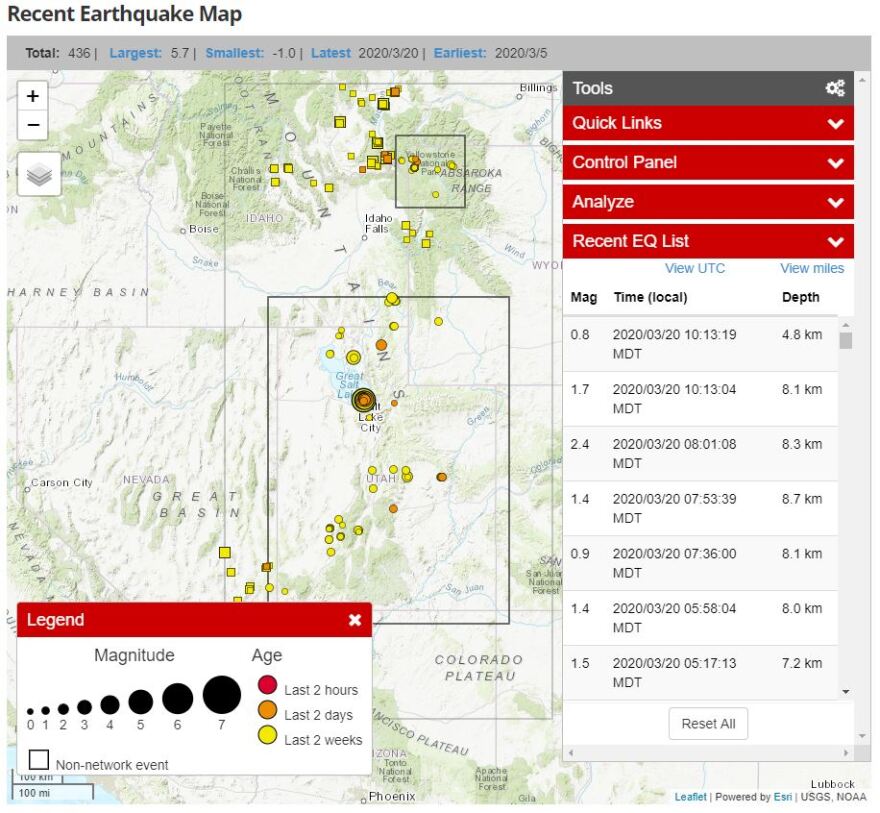Residents throughout Utah were shaken out of their sleep by a magnitude 5.7 earthquake near Magna earlier this week. Feeling the shake in Cache Valley surprised and alarmed many northern Utah residents. Is northern Utah susceptible to a similar earthquake?
The Wasatch Fault zone is visible as the steep mountain front that runs along the I-15 corridor and extends into Idaho. It marks the western edge of what geologists’ term “basin and range” faulting, where the earth’s crust is slowly thinning at a rate of a few millimeters per year, as the North American and Pacific tectonic plates move apart, according to Dr. Susanne Jänecke, Professor of Geosciences at Utah State University. Valleys, such as Cache Valley, are the basins bounded by the mountain ranges that mark the faults at the earth’s surface.
“Well, Cache Valley overall has a significantly lower rate of extension and therefore fewer big earthquakes than the Wasatch Front, but we've had earthquakes as large as the Magna earthquake in Cache Valley,” said Jänecke. “So that kind of an earthquake could definitely occur anytime in the future in Cache Valley or even a bigger earthquake as well. They just occur much less frequently in Cache Valley than they do along the Wasatch Front.”
Jänecke said large earthquakes of 6.7 to 7.3 magnitudes occurred on both the East Cache Fault and West Cache Fault between 5,000 to 4,000 years ago. She also said some residents may recall a magnitude 5.7 earthquake in Richmond in 1962, similar to the Magna event, with extensive destruction to buildings, especially those of unreinforced masonry, brick, construction.
The many aftershocks people feel in the days after the main earthquake can be unnerving and create more anxiety, and should be expected to happen in Cache Valley, too, noted Jänecke. She said it is even possible for random, delayed aftershocks to occur several weeks later.
“If somebody has a home a that barely survived a main shock, you might need to find other accommodations because an aftershock might just be enough ground shaking to really damage or destroy [the damaged] structure,” Jänecke said. "So it's important to assess the structural integrity and building after the earthquake.”
Being prepared for earthquakes can help people lessen anxiety levels and increase personal safety in an event. Jänecke said there are many resources available to help residents, including a website she created.
For information on earthquake preparedness, visit www.shakeout.org/utah/. For more information on the Magna earthquake, visit sites.google.com/aggiemail.usu.edu/magna-earthquake-m-5-7-sl/home.







